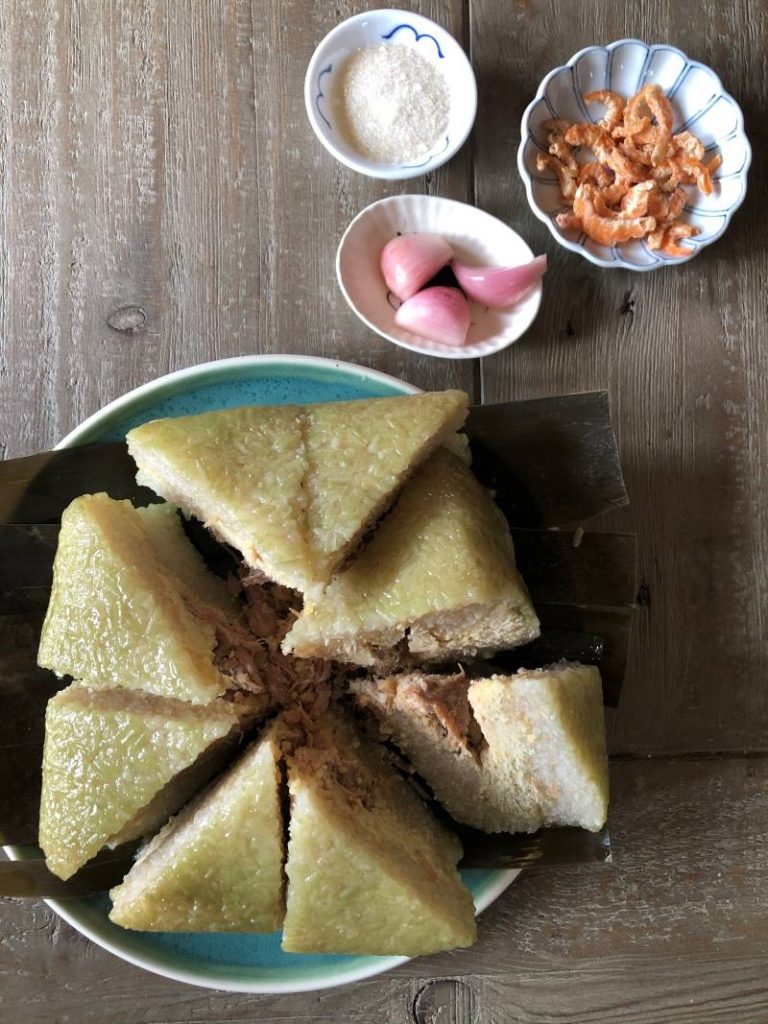
On an annual basis around this time of year, Vietnamese people everywhere gear up to greet one another with “Chúc Mừng Năm Mới!” (“Chook Moong Nahm Moy”!), which means Happy New Year! For 2021, according to the lunar calendar, the Year of the Ox kicks off on Friday, February 12. You can celebrate with Valentine’s Day this weekend, but also know that you can celebrate Tet (the Viet shorthand term for the holiday) for a week, for several weeks, or even for a month.
As novelist Nguyen Phan Que Mai told me when I interviewed her for a Tet article at the New York Times, the first few days of the Lunar New Year are for close family members and important teachers in your life. In Vietnam, the government officially shuts down for a week but after that, most people will go back to work and spend Tet with your work colleagues and hang out with friends. The country slows for about four weeks -- something I’ve heard about for years. I’ve unfortunately not been in the motherland for Tet since my family left in 1975.
That’s okay because Tet is about family and heritage. Tet is also about eating, given that ăn Tết (“ahn Teht”) literally means eating the Lunar New Year and is commonly used to describe activities for celebrating the holiday. Moreover, the Viet adage about how the first month of the year is about eating and idleness sets the tone for taking things easy.
What is Banh Chung
Food is a main focal point for Tet and there’s a hyper focus on must-have hearty sticky rice cakes called bánh chưng (northern region) and bánh tét (southern and central regions). The former is square and the latter is cylindrical. Both are commonly filled with sticky rice, mung beans and pork. There are sweet versions and modern versions (with salmon!).
My family is northern Vietnamese in heritage so we make bánh chưng. There’s an ancient creation story behind how the cakes were invented by a clever prince to symbolize the humble and delicious resourcefulness of the Vietnamese people.
Incredibly, the sticky rice cake is simply made of just a handful of pantry ingredients: sticky rice, mung beans, and fatty pork seasoned with salt, pepper and nuoc mam. The cakes are traditionally wrapped in fresh dong leaves to impart jade color and provide structure to create the gift-box like appearance. In America where the leaves are unavailable, people substitute banana leaves. My family adds bamboo leaves too.
The cakes represent culinary and cultural craftsmanship. Making them used to be a family holiday cooking project but nowadays, many people buy them. My mom and I still make them.
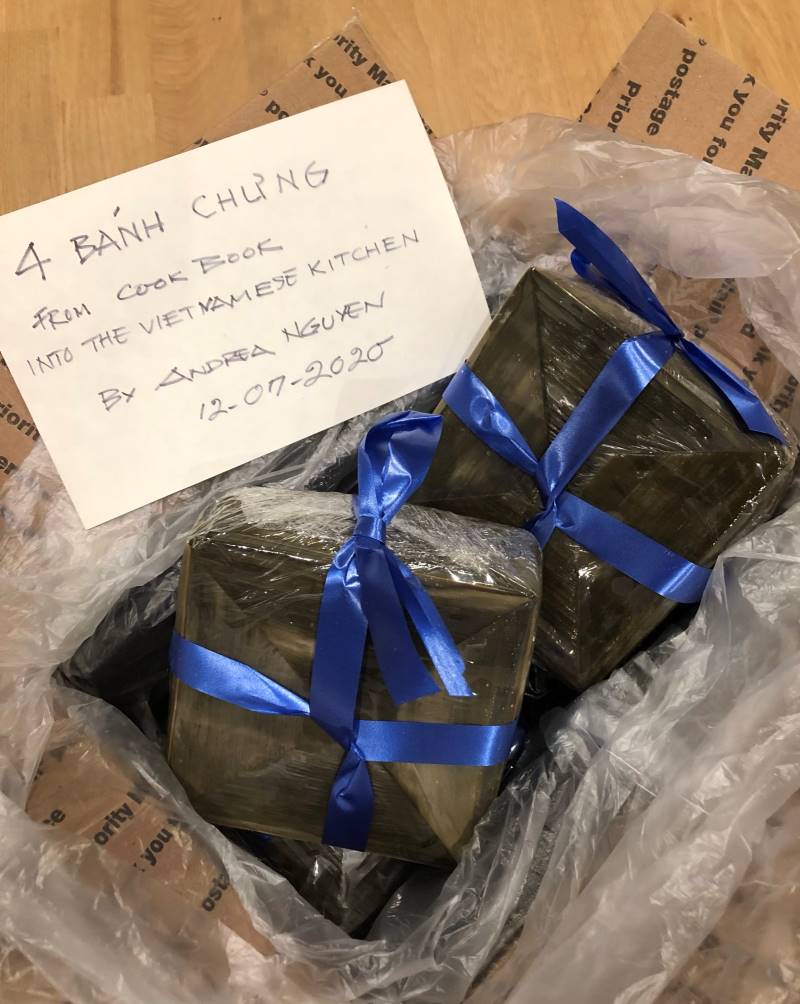
This year, I had gathered my ingredients but Mom beat me to the project by making a bunch in the fall and mailing a few to me. I froze them, thawing one this week to refresh.
Whether you got one in the mail, were handed one as a gift, or bought one, you may need to refresh it to its full, fragrant soft glory. That’s because the rice grains harden under refrigeration and freezing.
Video tips: How to Refresh Banh Chung and Cut it Up
Tet is about low-effort eating, which means that you don’t have to do much to refresh bánh chưng. I’ve been doing that for decades and put my know-how into this video, which also contains tips for cutting up into equal pieces so no one feels cheated of the rich, buttery filling.
How to Eat Banh Chung or Banh Tet
Once the cake has been unwrapped, what to do? You can eat bánh chưng warm or at room temperature. Cut pieces reheat well in the microwave oven. You may also pan-fry the sticky rice cake into a crispy bánh chưng pancake!
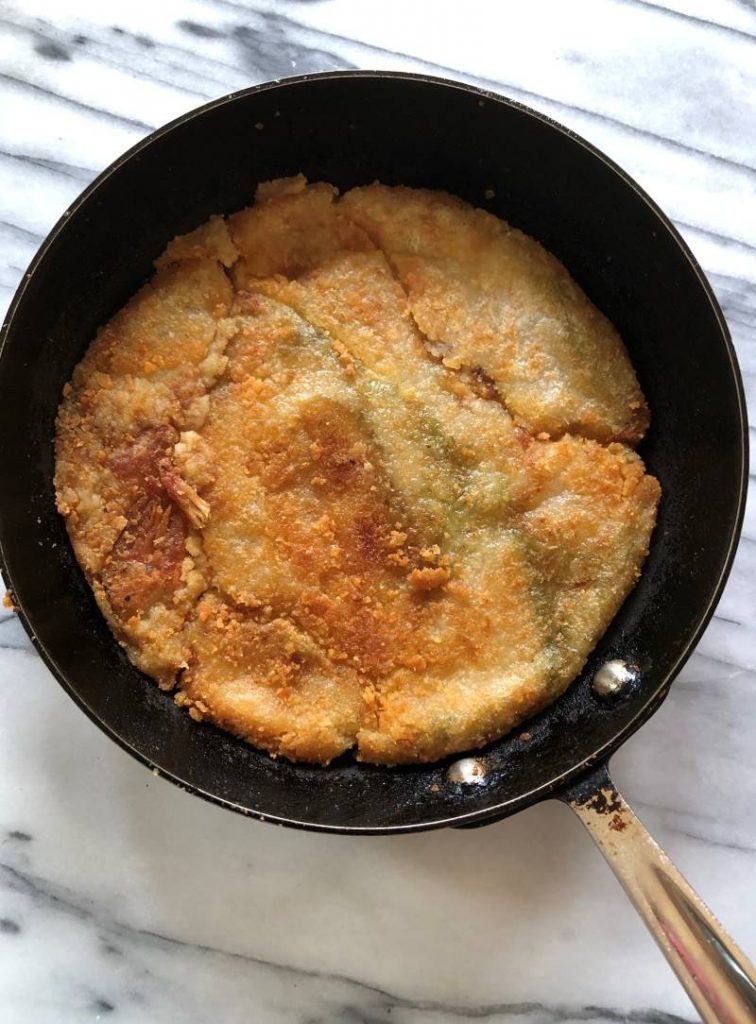
It’s unusually good dipped in sugar with some tangy pickle to cut the sweetness and richness. Other people like soy sauce. Many southern Vietnamese like banh tet with dried shrimp and pickled leek (củ kiệu, the same as Japanese rakkyo), sold in small cans or larger jars at Asian markets.
Tet Menu Ideas
What else can you serve with banh chung? After all, if you’re going to eat Tet, you want more to eat than just a sticky rice cake! May I suggest the following on this website, for example, some these Braised Pork Ribs in Caramel Sauce!
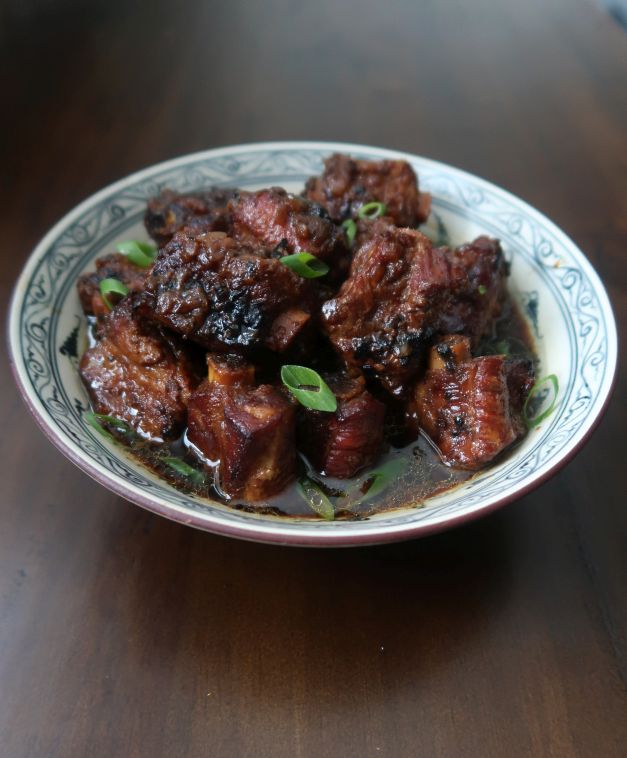
Serve up something refreshing and salad-y too, such as a Pomelo Salad or a Young Jackfruit Salad.
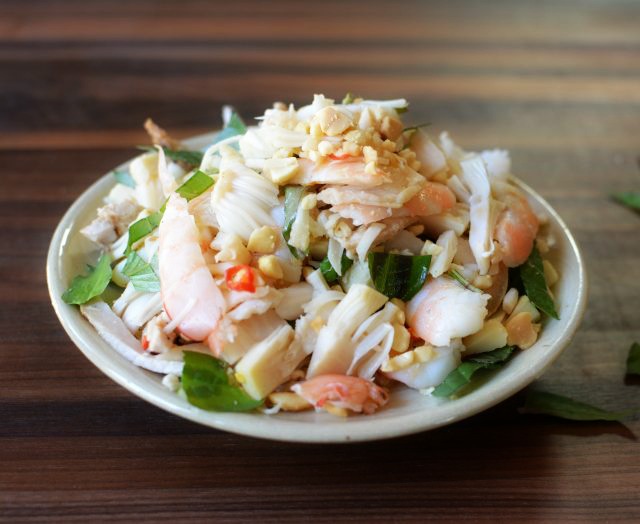
For a sweet, consider Candied Orange Peels, Ginger Cookie Coins or Almond cookies.
If you subscribe to the New York Times or its marvelous Cooking portal, I have five awesome Tet recipes, as seen below, that published last week (scroll to the bottom of the article). You will face a paywall if you’re not a subscriber, which may be a good reason to support journalism. 🙂
Have my books -- Into the Vietnamese Kitchen or Vietnamese Food Any Day? Look for the pork and egg in caramel sauce recipe in both. Check out pickle recipes. In VFAD, there’s also a fantastic cashew and sesame brittle (photographed below by Aubrie Pick)! You can lighten things up with rice paper rolls and brothy soups, too!
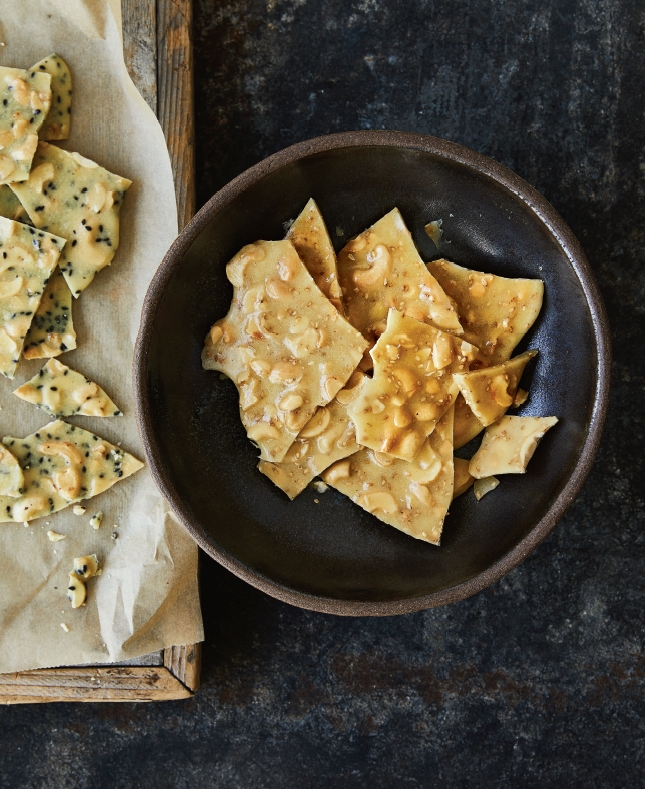
Make your favorite foods because Tet is about eating up what comforts and nourishes you. Share it with family and close friends so everyone may reset and start a new cycle of life.













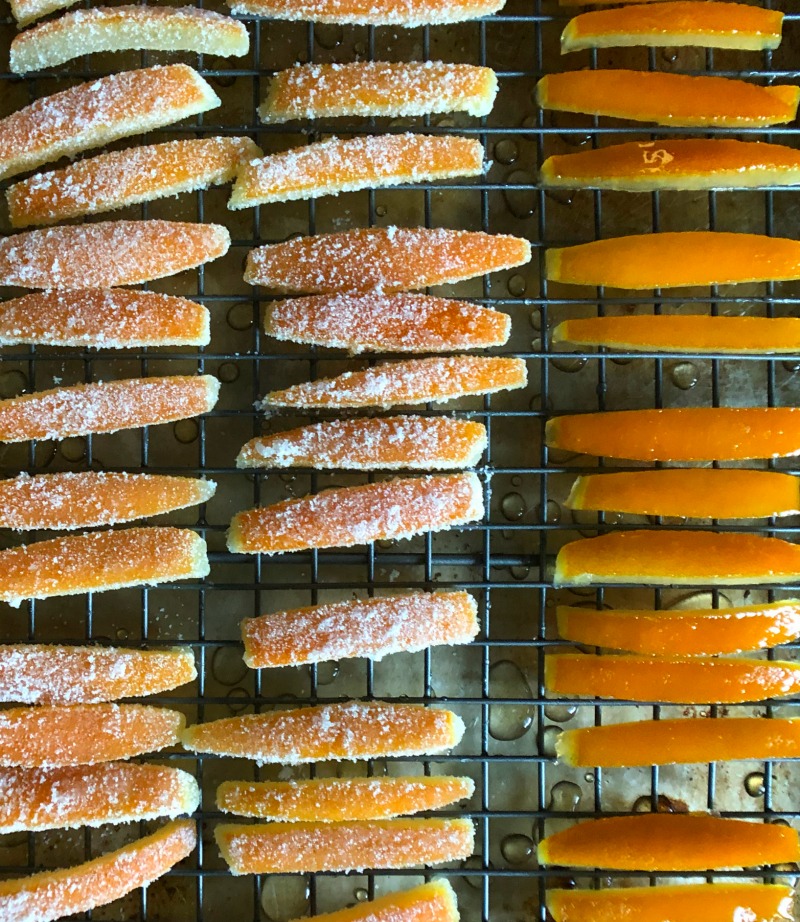
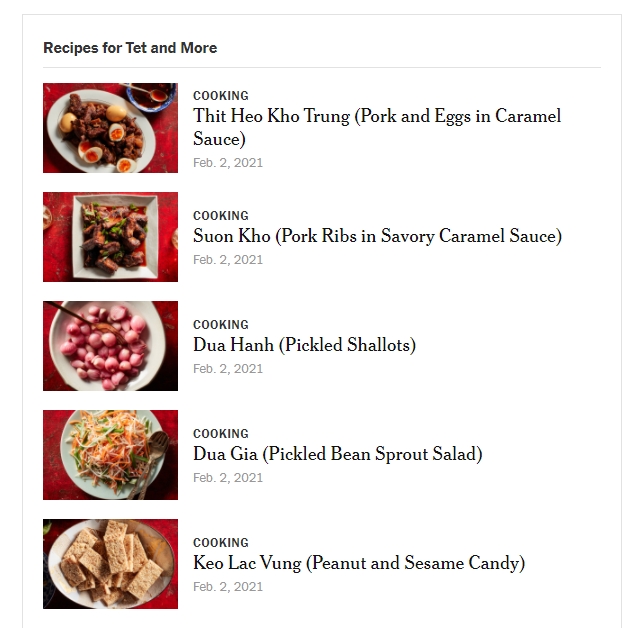




Ken says
"The former is square and the former is cylindrical."
They can't both be 'former'. Which is which?
Andrea Nguyen says
Duh! I was too tired to proofread closely. Thank you for catching that. I just fixed it.
Max Spencer says
My partner came home with a lovely wrapped parcel. No written intructions, just a vague memory of how to cook it from the thoughtful gift giver. We decided that slicing and frying was the best option. Result? Quite bland.
The basic flavour and texture of the dish is truly artisan. The addition of good quality soy sauce is when this cake comes alive. I wouldn't say it was breath-taking but we both enjoyed it and we'll be looking for other ways of cooking it.
Andrea Nguyen says
If you have leftover banh chung, fry it up again to a crisp. Then eat it dipped in a small pile of sugar. Sounds weird but it's good.